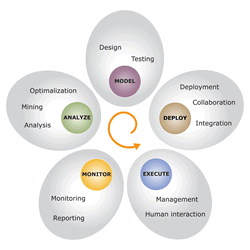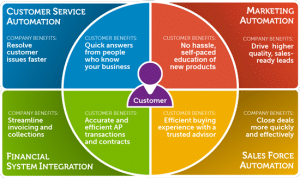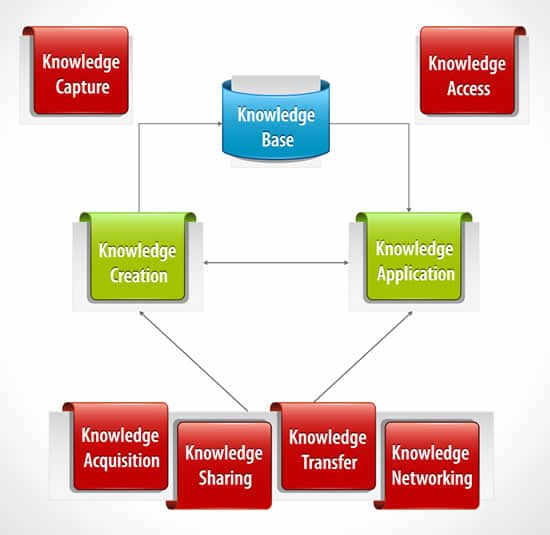
In this article of our technology series, explaining the evolution of technology and its use in the automation of business transactions and customer interactions, we take a look at how Artificial Intelligence technologies can help.
Previously we explained Intelligent Document Recognition (IDR) methods and the evolution from Graphic to Rule to Artificial Intelligence in our article on solving the information and big data challenge with artificial intelligence.
We concluded the latest AI-based IDR technology is required to process the wide variety of unstructured information coming in your enterprise from the traditional paper channel and, more importantly, from the “exploding” digital channels (emails, chats, social media messages, etc.) that are increasingly used to interact between businesses and their customers.
IDR applications in data capture
To complete the Intelligent Document Recognition (IDR) story, we briefly review where the technology is used for processing both paper and, more recently, inbound digital channels in customer interactions:
- Forms processing: this is where it all started about 20 years ago and is still very much in use to extract data from forms, like tax forms, healthcare forms, surveys, etc.
- Invoice processing: a popular use for IDR in the last 10 years or so, where the IDR engine extracts financial information and automates invoice processing in your Account Payable department.
- Mailroom processing: a more recent use of IDR where incoming mail is processed with classification to identify the form type, and then with data extraction to lift the relevant information from the inbound mail documents. We explained a mortgage document processing application in our earlier post, but there are many others applications applicable in industries dealing with a wide variety of incoming documents like government, insurance, financials, etc.

In those applications, IDR substitutes -or complements – the operator’s manual key-in and, in its final state, the extracted data is validated and exported to a System-of-Records database. If we put our industry analyst’s propeller head, IDR solutions are referred to as Document Capture applications.
Staying with the analyst’s terms, Data Capture generally enables Business Process Automation (BPA) as it feeds data into a mix of existing Enterprise IT systems, like Enterprise Resource Planning (ERP), Enterprise Content Management (ECM) and uses tools like Business Process Management (BPM).
Using the same tool in 2 very different markets, really?
It is not often that a specialized tool can be used in two very different applications, this is quite rare actually, like somehow if you could use your bread toaster in both the kitchen and in your workshop at home – very unlikely! Well, this is the case with IDR (Intelligent Document Recognition), let me explain.
Enterprise Customer Service departments and contact centers have a simple purpose: answering customer’s inquiries and, traditionally, customers have been interacting via phone – the “voice channel”.
Over time, Interactive Voice Response (IVR) solutions were added to the voice channel allowing customers to interact with a company’s host system via a telephone keypad or by speech recognition, thus automating the handling of some of the calls or, at a minimum, helping route the customer’s call to the right agent.
From Data Capture to Customer Experience Management
But customers are increasingly using new channels to interact with Customer Service. They are now chatting with agents, sending messages (mostly emails but also text and social media messages) and they are using the self-help tools on the website.
In earlier posts, we covered the unstructured information explosion and created by those customers digital channels interactions, as well as the use of Artificial Intelligence –based IDR to help understand the meaning of the customer’s interactions via non-voice channels.
Thus we have it folks, IDR (Intelligent Document Recognition) is used not only in the specialized Data Capture world, but also in the broader and way different Customer Experience Management (CEM).
Knowledge Base technology for automated response and self-help
Beyond IDR (Intelligent Document Recognition) that helps understand the Customer Interaction, the next level of automation with non-voice Customer Interactions is Automated Response, where the tool responds automatically to the customer inquiry.

Enters another Artificial Intelligence based tool that makes this possible – the Knowledge Base (KB). This tool learns from the repository of key information, like product descriptions, products Frequently Answered Question (FAQ) sheets and other relevant material created by experts. This amazing tool also learns dynamically from live interactions by analyzing customer agent responses to, for example, email inquiries. As such, a KB system learns over time from the experts and builds a Problem Description / Problem Answer knowledge that is then used to automatically answer inquiries. Its use saves on the need for live interaction and also provides faster responses.
You will see KB used with self-help solutions on company’s website (like in the technical help section) but also silently behind the scene of customer support’s email and chat systems.
Just like IVR automated voices systems, the use of automated response systems can be frustrating at time as it may not “get it” (“I want to speak to a representative”, “no, not Alice but a representative” –Grrrr-) or that it may answer something unrelated to my problem.
However, the hallmark of AI based technology to be able to increasingly act like-a-person and therefore “get what I want”. We will be writing more about AI, its evolution and its impact in further posts, stay tuned for that!

The author, Roland Simonis has over 20 years of ECM Capture experience, is the author of multiple white papers and a regular speaker at ECM and SharePoint conferences.
Images (except Dell image): Shutterstock.
Copyright top image: cubrazol, copyright BPM illustration: Littlepetra, copyright knowledge management illustration: Luna2631. All other images are the property of their respective mentioned owners.

